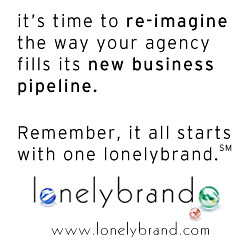 Making predictions is no easy business. Take this, for example:
Making predictions is no easy business. Take this, for example:
“There is no reason anyone would want a computer in their home.”
— Ken Olson, president, chairman and founder of Digital Equipment Corp. (DEC), maker of mainframe computers, arguing against the PC in 1977.
But, with accurate insights and reflection and analysis of those insights, we can begin to develop a sense of what the future might hold. For 2010, many are predicting change to occur in technology, pop culture and personal life. For beyond—into the next decade, here’s what we think is next for business models, products and services:
The integration of Conscious Capitalism will spur long-term growth.
Conscious capitalism is a new way of thinking about "social responsibility," the idea that an organization (government, nonprofit, business) has an obligation to act not only in its own best interests but also in those of all its stakeholders (customers, employees, suppliers, investors, society).
In the developing consumer driven market, companies will no longer be responsible to only their investors—not if they want sustainable profit, anyway. Instead, companies will either adopt Conscious Capitalism or be forced to once they realize that doing good allows businesses to do beyond well.
And the proponents of this change? First of all, they will be people like John Mackey, CEO of Whole Foods. Along with John Mackey, many CEOs in parallel industries have already begun implementing the integration of Conscious Capitalism.
Secondly, but more importantly, the consumers will drive this change. With the power to choose products and services created by companies who no longer see business as a machine driven by profit only, consumers will exercise this measure of control to empower companies that not only empower them, but also facilitate change for the world.
Vertical learning will be of increasingly high value.
Vertical learning is the pursuit of knowledge of our own assumptions, ways of interpreting experience and our beliefs. But, it has been long overlooked and placed secondary to Horizontal Learning—knowledge acquired through training, education and work experience—expanding our skill sets, in short.
Horizontal Learning is, of course, absolutely necessary. For instance, those who want to design products must learn the proper techniques and acquire the necessary technological information to do so. But Vertical Learning is seen as a lesser skill—introspection is not currently viewed to be equally valuable.
However, with the two working in tandem, we are less likely to think about business models, products and services in binary terms. Instead, we are encouraged to “think through” and think around the obvious obstacles to innovation and renovation—therefore building something of far higher worth.
If we take both into account, we can better see developing trends with objectivity in relation to each other and discern the implications of those relationships as opposed to seeing the individual issues and tasks involved in innovation.
Although making predictions can be tricky, there’s nothing outrageous about these and many other future trends we see developing. After all, businesses alike consumers are ready for positive change in the world—aren’t we all?
Have you seen the new Maddock Douglas homepage?
Follow Maddock Douglas on Twitter
 Let’s say you’re driving home from work when all of a sudden your front left tire drops into a massive pothole causing you to swerve right. Luckily, there are no cars in the right lane, but regardless you’ve narrowly avoided an accident, and with good reason, you’re upset.
Let’s say you’re driving home from work when all of a sudden your front left tire drops into a massive pothole causing you to swerve right. Luckily, there are no cars in the right lane, but regardless you’ve narrowly avoided an accident, and with good reason, you’re upset. 
 How will this apply to us? Take a virus like H1N1 as an example—immediate detection and strain identification can help protect the masses and make responding appropriately to unknown diseases faster and easier—which could mean saving lives.
How will this apply to us? Take a virus like H1N1 as an example—immediate detection and strain identification can help protect the masses and make responding appropriately to unknown diseases faster and easier—which could mean saving lives. When looking for a big idea, you don't necessarily want to hear "Eureka!" but laughter
When looking for a big idea, you don't necessarily want to hear "Eureka!" but laughter There’s been a lot of buzz around 4G and what it means for innovation. Maddock Douglas recently interviewed
There’s been a lot of buzz around 4G and what it means for innovation. Maddock Douglas recently interviewed  Let's start with some numbers: in the first 24 hours of it’s release, Modern Warfare 2 sold 4.7 units, or 310 million dollars in the US, Canada and the UK. Within the first 5 days, MW2 took in US$550 million worldwide. And yes, these numbers beat out music, book and movie releases during the same period. For some people, this shift in popular media might seem ludicrous. But for Maddock Douglas, it’s an event among many that continues to confirm a future innovation trend:
Let's start with some numbers: in the first 24 hours of it’s release, Modern Warfare 2 sold 4.7 units, or 310 million dollars in the US, Canada and the UK. Within the first 5 days, MW2 took in US$550 million worldwide. And yes, these numbers beat out music, book and movie releases during the same period. For some people, this shift in popular media might seem ludicrous. But for Maddock Douglas, it’s an event among many that continues to confirm a future innovation trend:

















